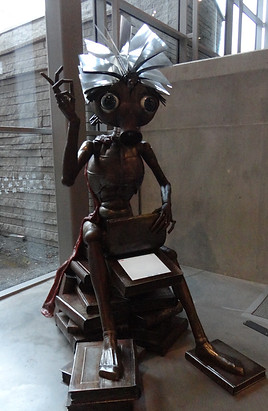
Broadly speaking, my mathematical interests have revolved around Representation theory of algebras and its connections with Cluster algebras, Algebraic combinatorics, and Algebraic geometry. More recently, I have also developed interests in the applications of Representation theory in Topological Data Analysis, as well as in Graph Neural Network.
A lay description of the mathematics that I often think about (for non-mathematicians):
The main focus of my research is Representation theory of algebras. In my work, roughly speaking, one understands the nature of an algebra via its action on some other algebraic structures, known as modules. Below, you can find an analogy that I have come up with, and often find it useful, to explain these concepts to non-mathematicians. Experts may disagree with this analogy, but this is not for them anyway!
''Suppose you are given a stick A; which we might wish to call an Algebra. Imagine that this stick is unfamiliar to you, and you want to better understand its nature. How could you learn more about it? And how might you determine whether this stick A is sturdy?
One often begins by examining its basic features: its size, shape, and other visible or measurable properties. Yet, as with many objects, much of its character becomes apparent only when you observe how it interacts with other things. For instance, you could strike A against objects that you already understand and study the effects of these interactions. Of course, not every object is suitable for such an experiment -- you cannot, for example, strike a dream with it (unless the stick itself is part of one!). In a similar way, an algebra A can only act on certain compatible objects, which we may want to call A-modules. By examining how A acts on these modules, we begin to uncover its inner structure and strength.
To develop a complete understanding of A, we may need to test its interaction with only finitely many modules; or, in more complex cases, with infinitely many modules. In that regard, some algebras are easier to understand than others; here the “complexity” can be viewed as the number of modules one must examine to fully determine the robustness and behavior of the algebraic stick A. Accordingly, some algebras are representation-finite, and otherwise they are called representation-infinite. A lot of my recent studies have been on the latter type of algebras.''

Some interesting expository materials (for everyone):
-
The Power of Mirror Symmetry
-
A Jewel at the Heart of Quantum Physics
-
What Information Might the Topology of Locally Symmetric Spaces Contain?
-
Michael Atiyah's Imaginative State of Mind
-
What Makes for "Good" Math?
-
High School Math -- Problem of the Week
-
"If, and only if" in Mathematics
-
Is deep learning a useful tool for the pure mathematician?
-
Will machines change mathematics?
-
A New Way to Understand Communication
-
Political Geometry: The mathematics of Redistricting